What we're reading is made up of books, articles and other reading materials across all fighting disciplines, philosophical perspectives, strategies, tactics and other topics we think you will find of value. We chose these topics because we believe they will help expand your thought process on how to think about training, competing, and living a budo lifestyle.
TAO of Jeet Kune Do
By Bruce Lee
This important work opens the door for understanding the genius that was Bruce Lee. The book has no photos but includes hundreds of illustrations with hand-written notes supporting his deep dive into technical material that is separated into four chapters.
Lee begins the book with Zen Buddhism quotes, then moves on to discuss all aspects of fighting including philosophy, strategic principles, conditioning, more technical aspects that are separated into four chapters including warm-ups, basics, footwork, evasive techniques, striking, kicking, grappling, and Jeet Kune Do’s five types of attack. On the Kindle version, the drawings and notes are extremely small. Buying the print edition is recommended.
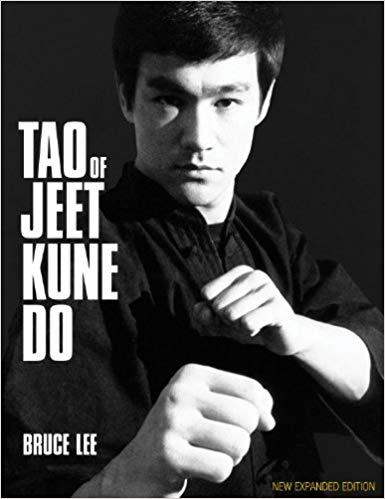
Grapple Strong
By Josh Bryant and Adam benShea
In Grapple Strong the authors combine their training and fighting wisdom and intense backgrounds to create this comprehensive guide for building power, endurance, and grappling strength.
They give specific exercises to mimic various movements in grappling, and then teach how to program these movements into a personal, customized routine.
Grapple Strong believes most grapplers have weak foundational strength, lowering their fighting ability right from the start.
It tells how to achieve excellent foundational strength, then segues into focused training methods to increase strength specific to the unique requirements and movements of grappling.
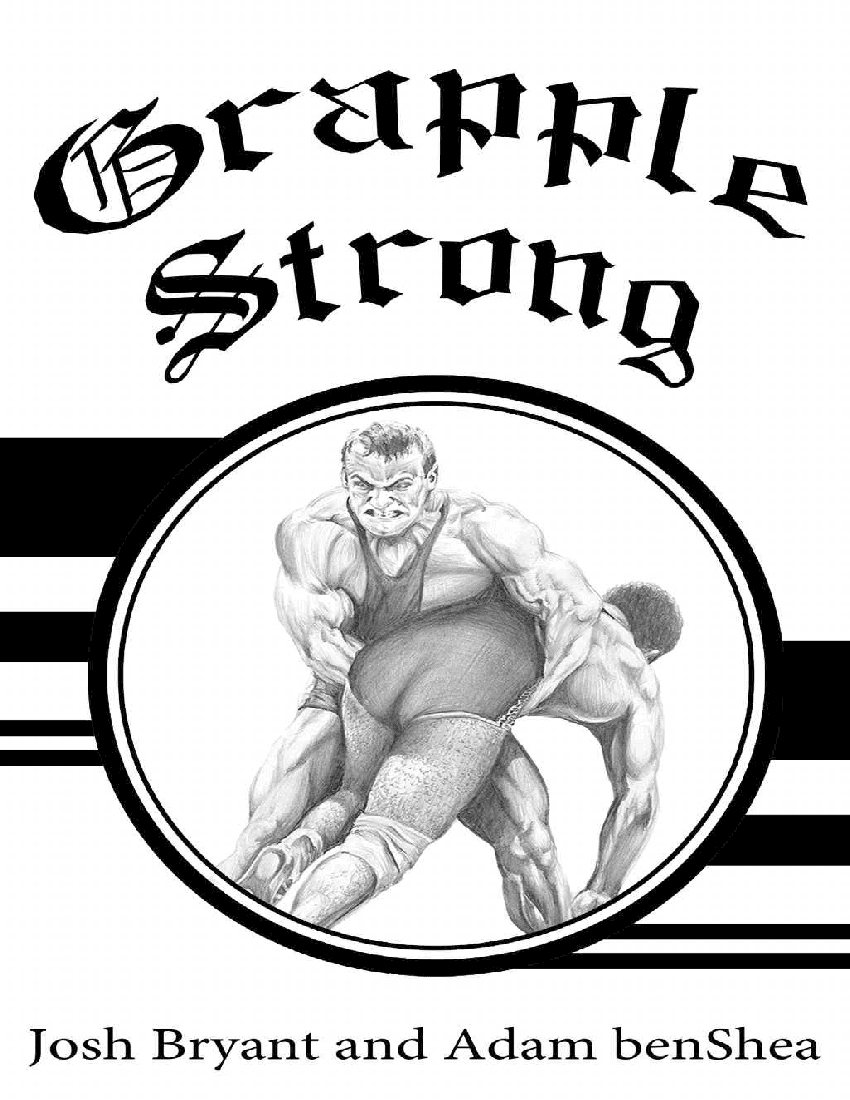
Mastering The 21 Immutable Principles Of Brazilian Jiu-Jitsu
By Paulo Guillobel
Guillobel’s extensive knowledge of BBJ as a martial art, and masterful ability to transmit that knowledge is clearly shown in his writing.
This masterwork effectively and comprehensively explains the most fundamental and immutable principles of Brazilian Jiu-Jitsu. It teaches essential fighting concepts which do not depend upon youthful strength and athleticism in order to implement.
Understanding the 21 principles revealed in this book will make any BJJ student able to discover the invisible details behind any technique, and understand why those techniques are being utilized. Paulo Guillobel’s Mastering the 21 Immutable Principles of Brazilian Jiu-Jitsu is a one-of-a-kind book that goes deep into the foundation of the Brazilian Jiu-Jitsu techniques and strategies.
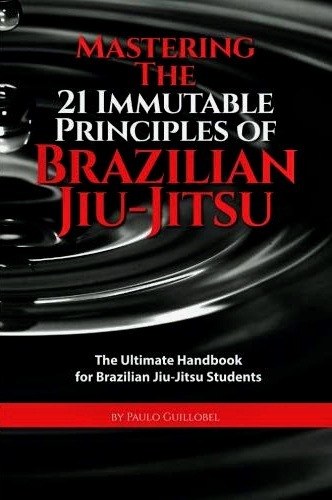
The Life Giving Sword
By Yagyu Munenori
Yagyū Munenori was a legendary 17th century Japanese swordsman, and founder of the Edo branch of Yagyū Shinkage-ryū. He was a military and political advisor to two shoguns and was a rival to the great Miyamoto Musashi. Munenori spent his life studying and practicing Zen. This study formed the approach for his deeply spiritual approach to sword fighting; Munenori was able to visualize through sword practice a way to transform the student into a total human being.
The central themes of the “Life-Giving Sword” is the idea of controlling one’s opponent by spiritual readiness to fight rather than by actual fighting—and “No Sword,” which is the idea that the mind must be free of everything, even the sword itself, in order to get to the place of complete mastery. Munenori’s ideas are essential reading which can be applied to business and relationships as well.
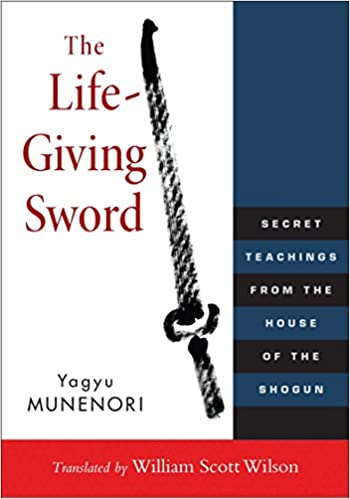
Karate-Do: My Way of Life
By Gichin Funakochi
This is the autobiography of Master Gichin Funakoshi, the founder of Shotokan Karate, and a fascinating glimpse into the life of a karate master. Gichin Funakoshi was responsible for bringing karate to Okinawa and the rest of Japan, which allowed it to disperse throughout the world following World War II.
Karate-do reveals the true nature of a gentle and reasonable Taoist that was Funakoshi as he shares fascinating stories of his unusual life. Funakoshi's idea was that Karate trains your body and mind and is thus a way of life.
The message from Funakoshi allows a deeper understanding of the true meaning and values of karate, including commitment, respect, endurance, and strength. All martial artists, especially students of karate, will want to read this book.
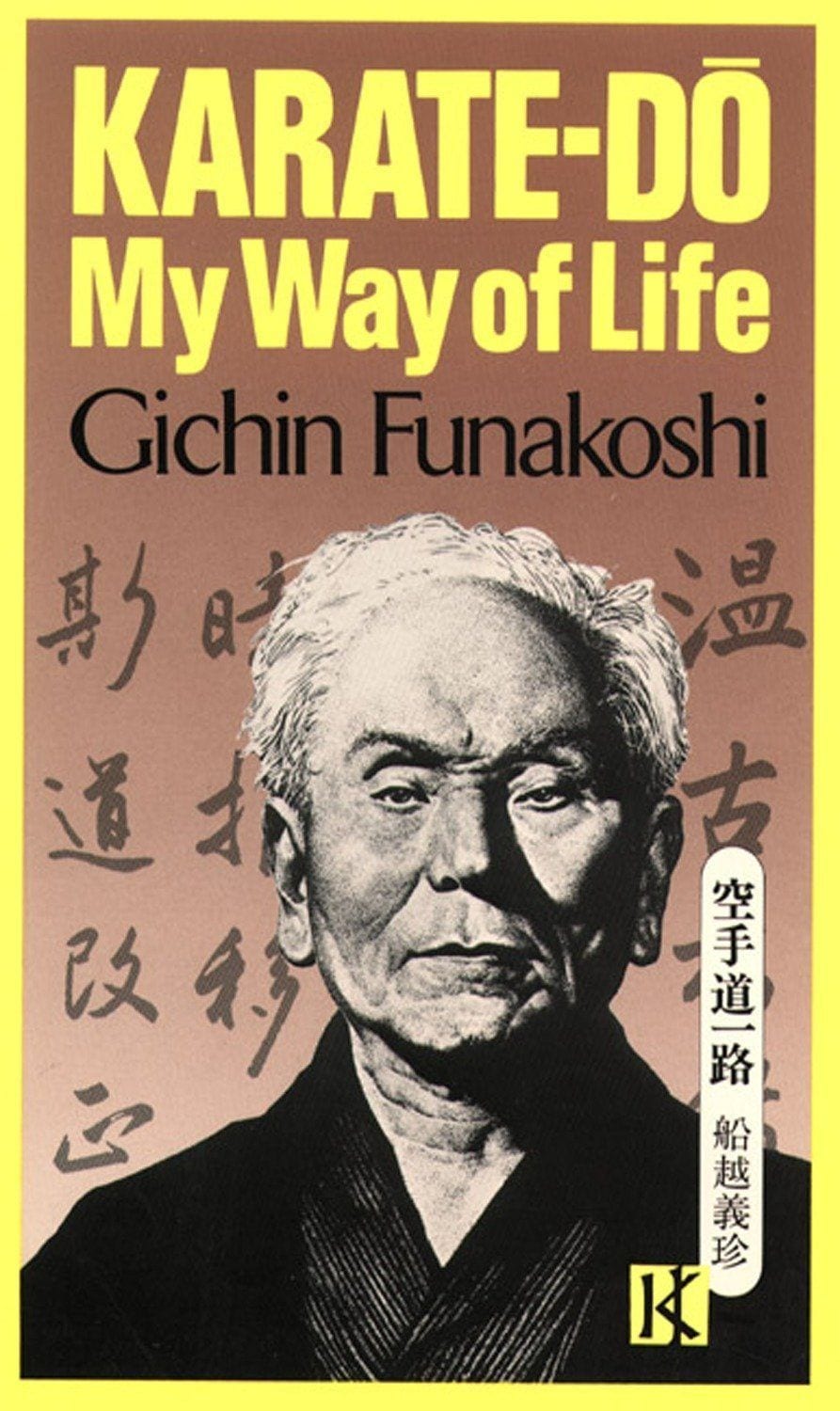
LA CANNE: J. Charlemont’s Defensive Cane Method
Translated by Mathew Lynch
La Canne clearly illustrates the deadly effectiveness of a cane as a serious weapon, both for swift attack, and for self-defense. The art of cane fighting uses techniques derived from saber fencing that include defensive moves, offensive strikes, and stabs. La Canne is clearly and logically written. It is presented and illustrated with grey-tone photos that are fascinating to peruse.
These are original photos of the time period, and present impeccably a time when every gentleman carried a cane, and often the ladies, too. Canes were considered an important fashion accessory in 1899, and many a gentleman took advantage of that by designing canes with a knife or rapier concealed in the ends. J. Charlemont shows that the concealed rapier was not required for defense of those skilled in the fine and little-known art of La Canne. This is an intriguing and unusual read.
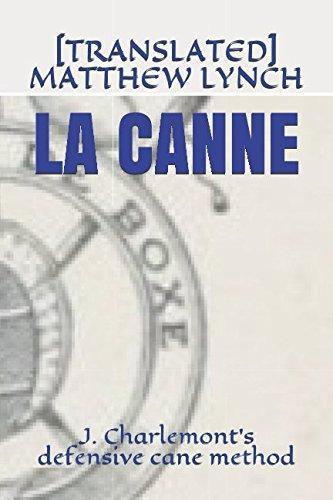
Kyudo: The Essence and Practice of Japanese Archery
By Hideharu Onuma, Dan DeProspero & Jackie DeProspero
Kyudo: The Essence and Practice of Japanese Archery is a masterpiece. Kyudo the oldest of Japan’s traditional martial arts is the standing meditation practice of Zen archery, using a bow and arrow. It is also the martial art most closely connected with bushido, the Way of the Warrior.
This ultimate kyudo manual includes the history, hundreds of detailed illustrations, and rare photographs of Master Onuma while he demonstrates the fundamental techniques and daily practice of "standing Zen." Kyudo delves deeply into the form, philosophy, spiritual, and practical aspects of the art of kyudo. This book is required reading for those interested in understanding what is described as the "right mind." Kyudo is an incredible reference source for those interested in Japanese martial arts. It is truly a five star resource.
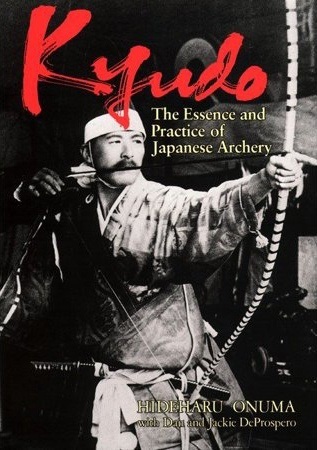
The Warrior Within: The Philosophies of Bruce Lee
By John Little
This philosophical compilation is pure inspiration, showing the deepest depths of a great mind, and illustrating the truest nature of a man the world honored primarily for his martial arts prowess. He was a powerful philosopher who considered every aspect of life, energy, spiritual connections, death, illusion, power and reality while searching for self mastery and contemplating his own inner philosophical truth. His deepest personal understanding of truth honored the power and beauty of knowledge and promoted total self mastery.
Lee created a complex personal philosophy that completely synthesized both Eastern and Western ideologies. His writings tackle the totality of life, discussing how to put things into perspective, how to see the balance within all things, and understanding the conceptual truth of Yin and Yang.
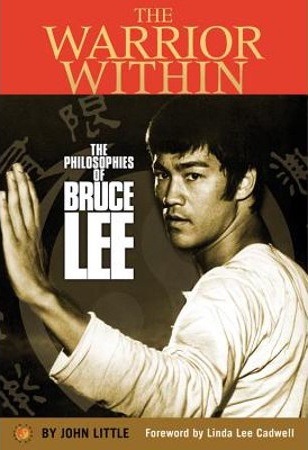
The Essential Guide to Judo
By Jigoro Kano
This essential guide is a uniquely comprehensive and most authoritative treatment of judo ever published. Jigoro Kano mastered swordsmanship and hand-to-hand combat over a hundred years ago, and decided to create a new martial art reflecting the underlying concept of maximum efficiency in the use of physical and mental energy.
This definitive judo textbook teaches the classical principles of Judo, both in terms of technique and philosophy. This is the textbook on Judo that every judoka must acquire, including sequential photos of each technique, discussions of principles, techniques, and spirit of judo. This definitive text about Judo will be appreciated by students and instructors, and martial arts aficionados of every type, as a historical reference, fully illustrated reference, and techniques reference.
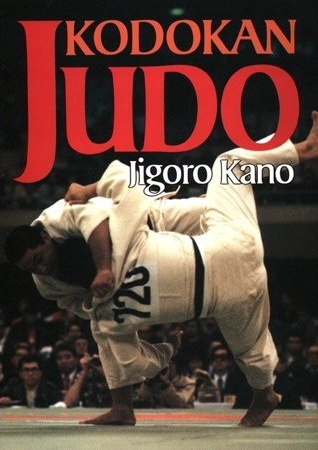
The Unfettered Mind: Writings from a Zen Master to a Master Swordsman
By Takuan Soho and William Scott Wilson
The Unfettered Mind was written during the time of the samurai by 17th-century Zen master Takuan Soho (1573–1645). This classic philosophical manifesto served as a guide how to approach sword fighting and life as an honorable samurai with 'mindfulness'. Soho thoroughly explains the Buddhist approach to life as regards to the samurai and swordsmanship.
It clearly shows from a historical perspective how the Zen philosophy merged seamlessly with the martial arts. It gives insightful perspective on the concept of clearing the mind as not to be forced. Instead of making your mind empty it suggests allowing all thoughts to flow by, like sitting on the bank of a river watching the waters flow. The directives within these pages hold true and apply very well to all martial arts study,
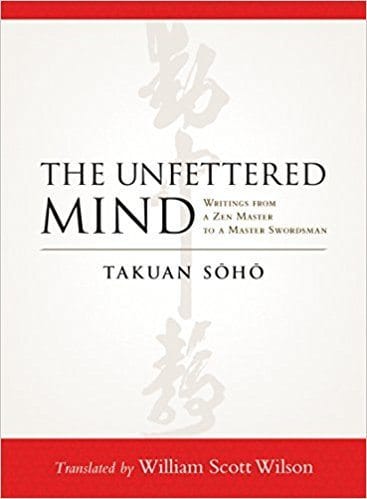
Kendo: The Definitive Guide
By Hiroshi Ozawa
Kendo is the Way of the Sword, one of Japan’s most ancient and revered martial arts. Kurosawa’s movies brought Kendo and the fascinating and illustrious Samurai onto the world stage, exciting renewed interest in the Way of the Sword, and a broader interest in Kendo, which was originally a form of swordsmanship, and has now emerged as a very competitive worldwide popular sport.
This book includes an introduction giving the history of kendo, its basic principles and philosophy, which alone makes this an interesting and absorbing read. Another unique aspect of Ozawa’s book is it contains appendices giving the rules at international competitions, important information about Kendo clubs outside of Japan, along with guidelines for running practice sessions, making it a unique resource.
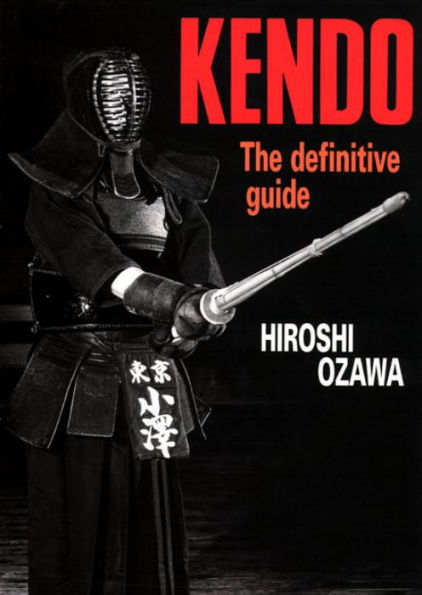
Complete Krav Maga
By Darren Lavine
Krav Maga is an Israeli military fighting system derived from a combination of techniques taken from aikido, judo, karate, wrestling, and boxing. Krav Maga's founder Imi Lichtenfeld, endorses the Complete Krav Maga author. Lichtenfeld says, “Darren Levine has my unqualified support and gratitude for his contributions to Krav Maga.”
Complete Krav Maga is dense with instructions and images, organized move by move, with excellent photos that make every movement easily followed. While the photos are black and white, they are clear and capture the right moment when illustrating a technique. Krav Maga works by teaching students to protect themselves by exploiting attacker’s vulnerabilities, and will work for anyone regardless of size, age, or gender.
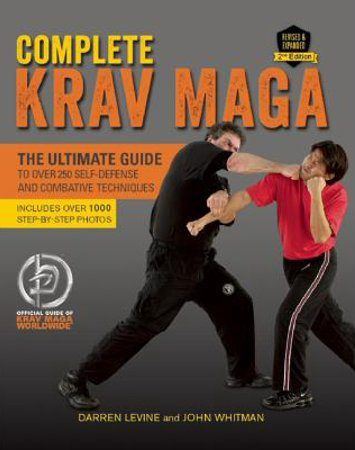
Hagakure: The Secret Wisdom of the Samurai
By Yamamoto Tsunetomo and Alexander Bennett
Hagakure was written by Yamamoto Tsunetomo almost 300 years ago and is the pivotal piece of Japanese texts on bushido. This essential book epitomizes the distillation of the Japanese samurai warrior spirit, or bushido. Dr. Bennett’s translation is the first to include the complete first two books of the Hagakure, along with most important and authentic passages from the third book.
This unique combination of readability and scholarship gives this version a distinct advantage over all previous English editions. The world described by Tsunetomo can often seem very alien and the underlying meaning of many passages may not be obvious to the modern reader. A must read for anyone who has an interest in the samurai culture, Japanese martial arts, and the Tokugawa-era, providing important historical context and perspective for today’s practitioners.
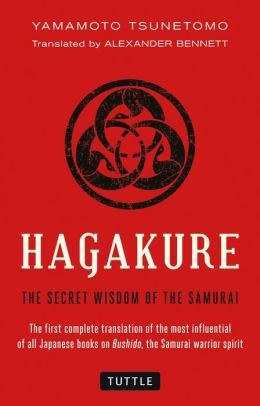
Koryu Bujutsu: Classical Warrior Traditions of Japan
By Diane Skoss
Koryu Bujutsu is an impressive volume consisting of eight essays on the arts of the Japanese samurai. These eight essays are a very informative group of essays about classical warrior traditions or the koryu. The koryu were primarily arts created by warriors, for warriors, of the warrior class during Japan's feudal period.
Those few traditions still existing today that were actually used back then on the battlefields of pre-Tokugawa Japan held effectiveness of the killing technique to be of primary importance. This volume delves deeply into the fascinating world of the classical warrior ways of feudal Japan. Not only does it function as a preparatory guide to these arts, but it also will improve any reader’s understanding of the culture and thinking of the martial artists who practice and teach these arts today.
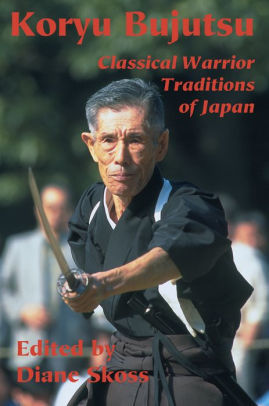
Japanese Swordsmanship: Technique and Practice
By Gordon Warner, and Donn F. Draeger
Japanese Swordsmanship is one of the best and most authentic volumes of Japanese sword techniques. It explains how the art evolved since the times of the samurai into what it is today, why people still practice this ancient and deadly martial discipline. No other culture has been able to create a sword with the razor sharp edge and supple spine of an authentic Japanese sword like the smiths of Japan.
The katana still serves as testaments to their incredible metallurgical talent and their rich history. Through the ages, these swords were refined, and so were the methods of making and using them. This book includes chapters on tradition and history vital for an understanding of the practice of Iaido. Many of these fascinating traditions are hundreds of years old and still practiced today.
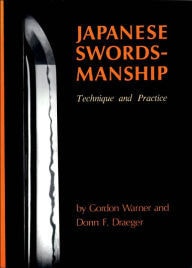
Comprehensive Asian Fighting Arts: Bushido - The Way of the Warrior
By Donn F. Draeger, Robert W. Smith
Asian Fighting Arts is considered a standard and definitive text in the field of Combat Arts. It explains the relationships among the fighting arts, methods and techniques found in eleven Asian countries and a wealth of anecdotal material to illustrate some of the 'deadliest' fighting systems.
The authors present numerous fighting arts in a clear and easy to read manner, from the accounts of Pakistani and Indian wrestlers, to the grappling arts of judo, jujitsu, to the striking arts and weapon arts of Japan and China. These two authors are credited with being the first serious early researchers of Asian fighting systems and bringing their knowledge to the American public through their books. This classic provides a sound foundation for the Asian Fighting Arts practitioner.
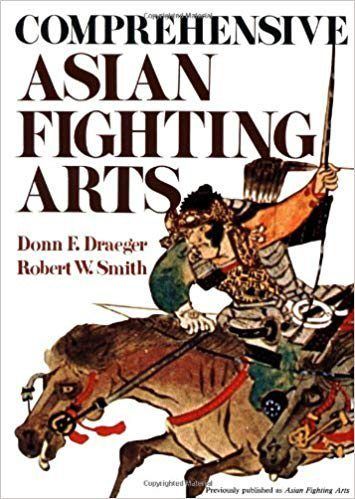
Bruce Lee: The Authorized Visual History
By Steve Kerridge
Bruce Lee’s intense charisma, powerfully enigmatic and energetic personality, intelligence, humor, and perfect physique all shine through in the thousands of photos he took during his lifetime.
Even though Bruce Lee died in 1973, he remains the most famous and influential martial artist of all time. This breathtaking photographic compilation also includes his poetry and film scripts, intelligent musings and philosophical musings. The broad range of photos guarantees that there will be new, never-before-seen images for fans and followers as many are previously undiscovered and never-before-published.
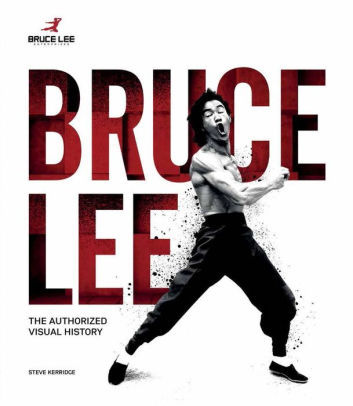
The Sword & the Mind: The Classic Japanese Treatise on Swordsmanship and Tactics
By Donn Draeger & Robert Smith
The Sword and the Mind is a compilation of brief, 16 - 17th century works, handed down within a family, from a samurai in Japan's Sengoku period famous for creating the Shinkage ryū school of combat, Kamiizumi Hidetsuna, It is a deeply penetrating treatise on strategy, philosophy, and Zen.
The exacting swordsmanship instructions for positioning, striking with one and two swords and defending against opponents are excellent. During this period samurai warriors wrote sword-sharp contemplations that are applicable to any type of competition or conflict, including business and political arenas. The Sword & the Mind is a highly advanced study on the psychology and philosophy of not only mastering swordsmanship but Zen.
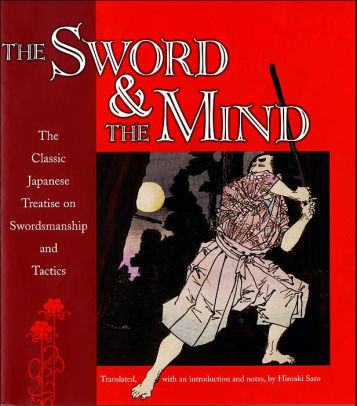
Book of Five Rings
By Miyamoto Musashi
The Book of Five Rings was written in 1643 by renown wandering samurai swordsman and painter, Miyamoto Musashi (1584-1645). He was an undefeated Japanese swordsman who developed the two-sword style of fighting and won more than 60 sword fights while traveling throughout Japan.
Musashi details his personal philosophical approach to kenjutsu and martial arts in general in this short book on tactics and movements which is considered the definitive book on samurai philosophy. Musashi establishes a "no-nonsense" theme in the book.
He also continually makes the point that the understandings expressed in the book are important for combat on any scale, whether a one-on-one duel or a massive battle. The book includes an introduction by Thomas Cleary which delves into the spiritual background of the warrior tradition.
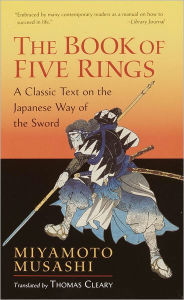
Championship Fighting
By Jack Dempsey
Was an American professional boxer who competed from 1914 to 1927, and reigned as the world heavyweight champion from 1919 to 1926. He was a cultural icon in the roaring 20's. He was known for his brutal fighting style and explosive punching, along with techniques for footwork, hooking, range, uppercuts, and defensive fighting strategies for drawing, feinting, and evasion.
After the world-famous Louis-Schmeling fight, Dempsey stated he was glad he never had to face Joe Louis in the ring; when Louis eventually fell on hard times financially, Dempsey served as honorary chairman of a relief fund to assist him. He wrote Championship Fighting when he was 60 years old. While his fighting days were behind him, his fighting IQ was not. He was inducted into the Boxing Hall of Fame in 1951.
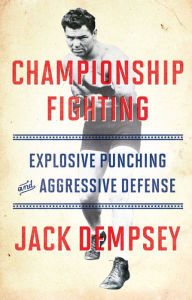
The Art of Peace
By Morihei Ueshiba
Morihei Ueshiba (1883-1969) was lovingly known as "O'Sensei", the great teacher was a renown martial artist and the founder of aikido, a Japanese mind-body martial art emphasizing holds, throws, and joint locks.
O'Sensei called aikido “the Art of Peace,” and believed that aikido principles could be applied to overcome all challenges in life to create a nonviolent path through conflict. Ueshiba taught that “The real way of the warrior is based on compassion, wisdom, fearlessness, and love of nature.”
He was a soldier, spiritual seeker, and master of many martial arts who believed in the importance of creating harmony, peace, and interconnectedness in the world.
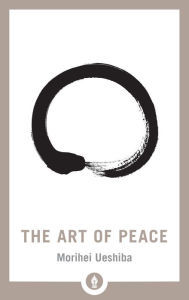
Becoming the Path of Wing Chun
By Michael Herrera
Becoming the Path of Wing Chun provides essential training concepts and important ideas for students wishing to understand the martial art of Wing Chun. This book is not an instruction manual on how to execute Wing Chun techniques but more of a instruction manual on mental positioning.
This book guides you on what you should be feeling and thinking in the moment to accurately project or demonstrate the positions. Herrera has taught Wing Chun for many years within the Dallas, Texas, area and is the founder of Wing Chun Dallas Kung Fu.
The book is written in a concise and straightforward manner that clearly illustrates concepts important to the system. It is a critical training manual that will assist the serious student of wing chun in improving their art.
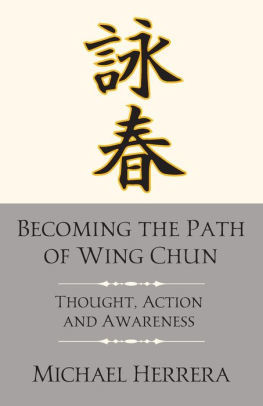
U.S. Army Hand-to-Hand Combat Handbook
By the U.S. Department of the Army
Combatives is a fighting style (hand–to–hand combat) that is utilized by the U.S. Military. It's focus is to ensure soldiers are mentally prepared to engage and kill enemies in close combat. The Army Combatives training program enhances unit combat readiness by building a soldiers’ personal courage, confidence, discipline and the unit’s esprit de corps.
Combatives training empowers Soldiers with the ability to conquer fear and anger, allowing for controlled actions and enhanced situational awareness. This training manual is packed with an impressive array of fighting techniques designed to provide the fundamental building blocks for today’s warriors. It contains more than 350 photos and diagrams that illustrate all aspects of training including basic and advanced ground-fighting techniques, take-downs and throws, strikes, handheld weapons, standing defense, group tactics, along with the basic philosophy of modern combat.
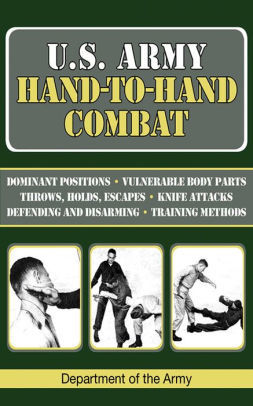
Muay Thai: Peace, At Last
By Michael Goodison
In Muay Thai: Peace, At Last, Michael Goodison writes a powerful narrative of his own true story to find inner peace amidst the numbing effects of modern day living. Goodison takes us with him on a journey both physical and spiritual that brings him to Chiang Mai, Thailand, to study the martial art of Muay Thai.
While there he fights with cobras, learns from Buddhist monks, and prepares himself to participate in a stadium fight where he headlines as a “farang,” or foreigner. Goodison shares his harsh training regimen and the brilliant fighting techniques of the Muay Thai fighters.
Goodison’s account is fascinating, brutal, and spiritually uplifting all at once, and an intense page-turner impossible to put down.
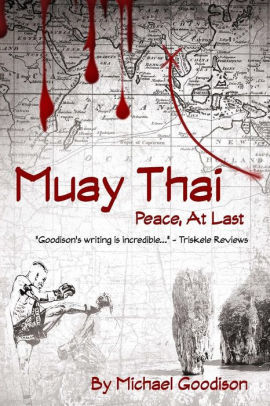
Harvard Medical School Guide to Tai Chi
By Peter Wayne
Dr. Peter Wayne’s purpose for writing this book was to create an integration of Eastern and Western medicine. Dr. Wayne succinctly summarizes the enormous body of scientific evidence proving the effectiveness of Chinese medicine and provides readers with practical approaches to utilizing these healing techniques on a daily basis."
I assemble and integrate in this book a diverse set of knowledge from both the East and the West -- from the simplified Tai Chi exercises outlined to the ancient roots of Tai Chi and the modern science substantiating its health claims -- with the sincere intention and hope that it will enrich your life and help provide you with a roadmap for your own Tai Chi journey."
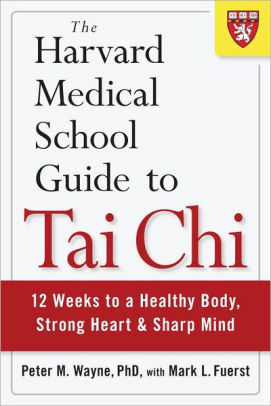
Spy Combatives: Spy and Military Self-Defense Secrets From a Former CIA Officer and Combat Marine
By Jason Hanson
Former CIA officer Jason Hanson, and combat marine, police officer, and martial arts master, Danny Lane wrote Spy Combatives as a self-defense system applicable for non-combatives, martial artists, and warriors. These combat techniques are based on scientific principles and use specific pressure points on the body to stop an attacker.
This book illustrates techniques that were once only available to military and police force members. As with any training manual, it is up to the reader to figure out what works and what does not. Use common sense when assessing the hand to hand section. The best part is the escape from restraints section. The directions in the book are just about spot on. However, it takes more than a book to get out of handcuffs. None the less, an interesting read and has approaches that can be incorporated into a self defense regimen.
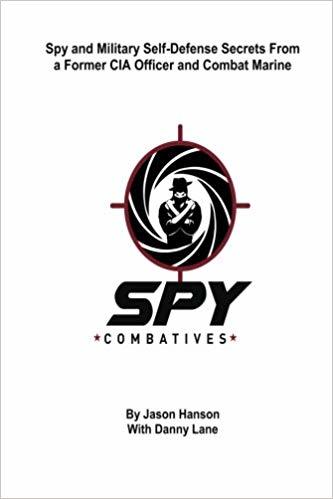
The Wrestling Drill Book
By William A. Welker
This book contains match-tested drills from top high school and college wrestling coaches. Each contributor gives expert techniques or tactics of wrestling for which they are well known. They break each technique down into set up, action, and coaching advice. Chapters unfold sequentially, moving from simple to more complex drills, each including setup requirements, descriptions of the action, and key coaching points for maximizing the value of every drill.
Detailed descriptions provide thorough instruction for proper execution of each move. This excellent book provides solid techniques and winning strategies for take-downs, riding and pinning combinations, escapes, reversals, and drills. It has black and white photos for visual tips on establishing fundamental wrestling skills.
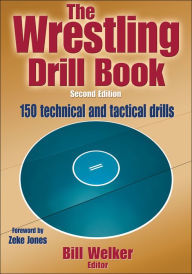
My P.E. Teacher is a Ninja (The Wonder Who Crew)
By Joey Acker
This fun book is published in large print for ages 4-10 and is a highly entertaining and an easy beginner’s story. It is excellent for reading aloud in the classroom, public library, or at home. You are able to see P.E. from a child's mind’s eye and hear their voice through the author’s writing.
The illustrations are adorable and spot on. In this book the child will help the students in Mr. Walker’s school figure out if he is really a ninja in disguise or just a super-fast P.E. teacher. They will also share in Luke Parker’s shock when his brother gets turned into a superhero and must help save the world.
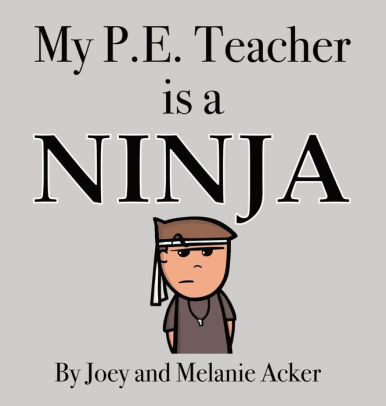
The Way of Qigong: The Art and Science
By Kenneth S. Cohen
The Way of Qigong by Kenneth S. Cohen connects this 2,000 year old Chinese martial art with numerous medically proven scientific studies illustrating the health benefits of qigong, tai chi, meditation, and other related arts. Cohen is a world-renown Qigong Grand Master, health educator, and Chinese scholar with over 50 years of experience who was chosen as one of nine amazing healers studied in the Menninger Clinics. Cohen is a dedicated leader in promoting ongoing interactive dialogues between Eastern and Western medical approaches.
He continues to prove the powerful efficiency of ancient Chinese medicine using modern scientific methods. This book provides a fascinating overview of qigong, its practice, applications, and Western scientific validation of why it works so effectively.
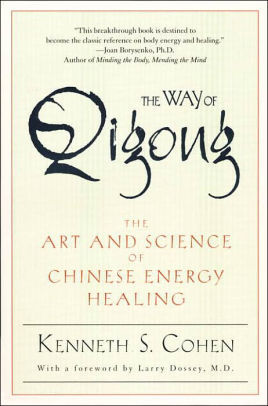
By FAHL Staff | 25 August 2024
"Jiu-Jitsu University" by Saulo Ribeiro and Kevin Howell is a comprehensive and transformative guide to Brazilian Jiu-Jitsu (BJJ), authored by one of the sport's most accomplished and respected figures. Saulo Ribeiro, a six-time BJJ World Champion with unparalleled achievements across multiple weight categories, from our perspective imparts his extensive knowledge [...]
By FAHL Staff | 18 August 2024
"When Violence Is the Answer: Learning How to Do What It Takes When Your Life Is at Stake" by Tim Larkin, a self-protection expert and former military intelligence officer, provides a comprehensive guide on handling extreme, life-threatening situations. Over the past two decades, Larkin's training with elite military forces and [...]
By FAHL Staff | 18 August 2024
In Dave Lowry's thought-provoking book, "Moving Toward Stillness," we embarked on a philosophical journey that delves deep into the heart of budo, offering 45 insightful essays that explore the universal values embedded in martial arts and their enduring relevance in the contemporary Western world. Lowry's mastery in weaving together anecdotes, [...]
By Chris Davis | 20 June 2018
The legend of Bruce Lee tells us that the original lion of crossover martial arts cinema was also a lion of the martial arts life. After all, this is the man who wrote Tao of Jeet Kune Do after breaking his own back working too hard on his craft. Although, [...]
Page [tcb_pagination_current_page] of [tcb_pagination_total_pages]
